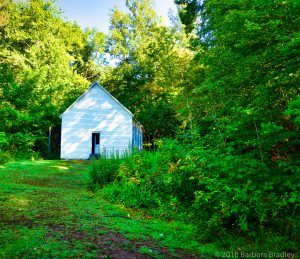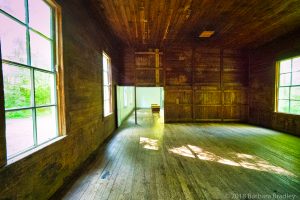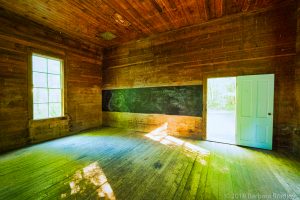Summertime drives. We can’t get enough of the smells of tall grass, mown fields, wildflowers and the feeling of slight breezes and toasty (not too hot) sunshine!
One of our favorite summertime drives is the Cataloochee Valley in the Smoky Mountains National Park. Cataloochee is tucked among 6,000 foot peaks, making this remote valley peaceful and serene. Cataloochee Valley is on the “quiet side” of the park and is mostly visited by “local” people from Tennessee and North Carolina.
Cataloochee is actually comprised of three valleys. The two main parts of the Valley are “Big Cataloochee” and “Little Cataloochee.”
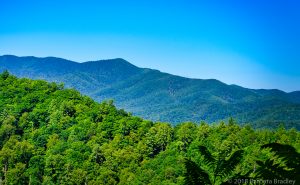
A movement to restrict farming and logging became the creation of the national park in the 1920s. The descendants of the original Cataloochee families still come together to celebrate their unique history and heritage. **
The word Cataloochee is from the Cherokee word Gadalutsi, which means “fringe standing erect.” Historians think the reference is to the tall rows of trees which surround the valley.* The Cherokee gave up the valley when they signed the Treaty of Holston in 1791.*
Many compare Cataloochee to the much more famous Cades Cove in Tennessee. Like Cades Cove, the Cataloochee Valley was settled in the early 1900s. Historic structures remain but the primary draw is the valley itself.
Cool glades, wildflowers, bubbling streams, butterflies, wild turkey, deer, black bears, and birds are everywhere in the valley. My dog found every nearby stream and small waterfall for a swim! Meanwhile, we kept an eye for wildlife as we learned the history of the valley.
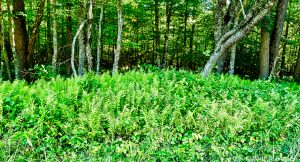

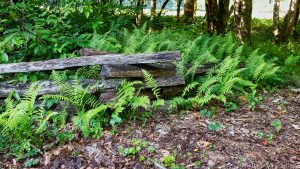
ELK IN Cataloochee Valley
Locals make pilgrimages to Cataloochee Valley each year (in each season) to view the Elk there. Elk wander free and wild in Cataloochee after being reintroduced to North Carolina in 2001.* The Great Smoky Mountains National Park, with the Rock Mountain Elk Foundation worked together to bring elk back to the national park in Cataloochee Valley.
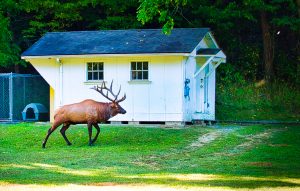
Only 52 elk were originally released into the valley. Now the herd has grown to over 150 and Elk can be found in the nearby towns of Maggie Valley and the land of the Eastern Band of the Cherokees in Cherokee, NC.**
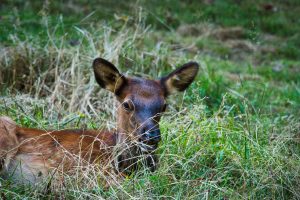
According to Watching Elk 101 from the Visitncmokies.com website, the elk’s activity throughout the seasons can be summarized as follows:
Calving Season: Late Spring – Most of the calves in Cataloochee and Western NC are born late May thru June. The cows hide their calves in the high grass for safety and, to avoid disturbing the calves, visitors should stay out of the fields. Cows can be aggressive in protecting their young. By late June, the calves are typically up and moving with the herd.
Growing Season: Summer – The herd can often be seen grazing in fields. Bulls are “in velvet,” rapidly growing new antlers. The calves grow quickly and will gain as much as 140 pounds by winter.
The Rut: Fall – The mating season for the elk is called the rut, which occurs from mid-September through the end of October. Large bulls bugle and fight for domination and the right to breed with the cows (lady elks). This can be a dangerous time for visitors as the bulls can be aggressive with unpredictable behavior. For your protection, please remain on the roadway and near your vehicle during the rut.
Winter in Cataloochee – Winter is a quiet time in the valley. The elk herd retreats to the woods and may not be seen in the fields for weeks. The road can become treacherous in the snow. The road will often be closed when the snow is on the peaks around Jonathan Valley.
If possible, schedule at least one of your trips to the Big Cataloochee in the fall. The wild Elk begin the rut season and watching nature’s noble animals is thrilling! Bull Elk bugle a haunting, eerie call to attract females. You will never forget the majesty of these huge animals and the mating ritual !
NOTE: YOU ARE NOT ALLOWED TO GET CLOSER THAN 50 YARDS AWAY FROM THE ELK OR BLACK BEARS HERE. DURING RUT, RANGERS MONITOR AND WILL ASK PEOPLE TO STAY IN THEIR CARS WITH DOGS TETHERED. THESE ARE WILD ANIMALS AND EXTREMELY UNPREDICTABLE DURING RUT.
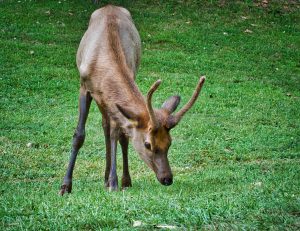
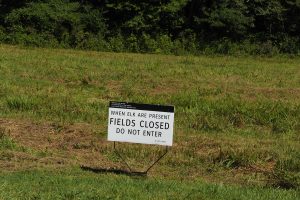 |

HISTORY
We can only touch on the deep history of the Cataloochee Valley. Folks lived here up until the time the land was incorporated into the National Park. Beginning with The Cherokee before America was founded through the Civil War and into the early part of the 20th century, Cataloochee has been significant.
Take a minute to read this note tacked to the interior wall of the Caldwell House:

HISTORIC STRUCTURES
The first land purchase in Cataloochee was by Henry Colwell in 1834. Henry’s son, James Colwell (1797-1867, ) moved his family to the valley. Over time, the spelling of his last name was changed to Caldwell, so we stopped first at the Caldwell House and Barn. The Caldwell Barn sits across the road from the old house. We walked across a small bridge to reach the house. The fields surrounding the house were overflowing with wildflowers and butterflies!
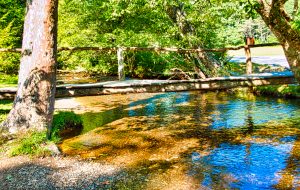
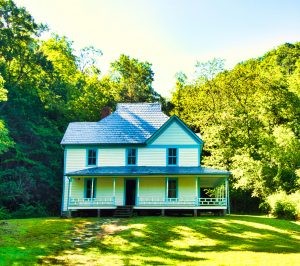
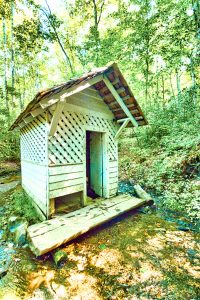
The Caldwell Barn is magnificent!
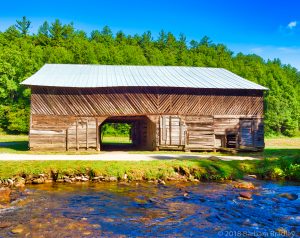
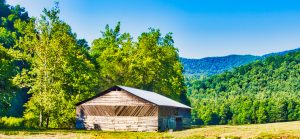
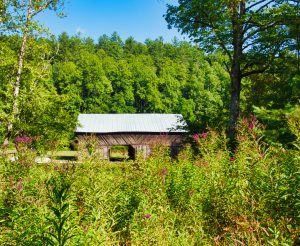
A man named George Palmer arrived in the Valley in 1838 and settled in the eastern end of Big Cataloochee. In 1854, Jack Vess, a son-in-law of George Palmer, and Daniel Cook (1831-1908) became the first permanent settlers in what is called “Little Cataloochee.” That settlement is to the north of the Big Cataloochee Valley.
Settlers continued to move into Cataloochee Valley during the 19th century. In 1900, the population of the valley was 764.***. Those settlers built a school and a church.
Palmer Chapel was built in 1898 in a peaceful glade.

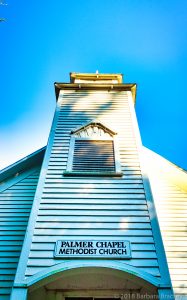
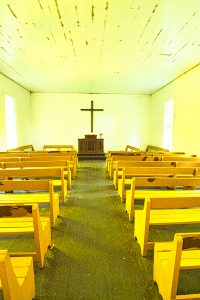

Down a seldom used path is the Beech Grove School House, built in 1901.
|
|
|
|
|
|
TRAILS
Cataloochee also has some great hiking trails. Here are a few:
- Boogerman Trail-7.4 miles roundtrip loop through old tress and historic home sites.
- Rough Fork Trail-Easy 2 mile roundtrip, with a beautiful hike to the Woody Homesite.
- Pretty Hollow Gap Trail-8 mile creekside hike up to Pretty Hollow Gap.
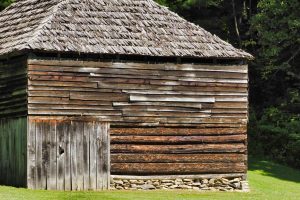
Love trout fishing? Cataloochee is known for the great trout fishing.
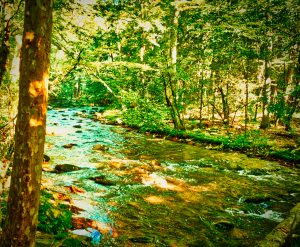
Add the Cataloochee Valley to your list when traveling in the southeast. Keep in mind that the trip involves narrow gravel roads which take longer to drive. From the time you leave highway 276, expect to spend an additional 30-40 minutes to reach the valley. Don’t miss this treasure!
DIRECTIONS
From Waynesville, NC, take Highway 276 (Jonathan Creek Road) north toward I-40. Just prior to reaching I-40, turn left onto Cove Creek Road. There is a small sign indicating the turn-off to Cataloochee. Follow Cove Creek Road for 11 miles to the Cataloochee Valley.
Cove Creek Road begins as pavement through curvy turns and will switch to a gravel road. This old dirt road will take you to a sign and gate (open sunrise to sunset) marking the Great Smoky Mountains National Park and a trailhead. When the gravel road gets to another paved section, follow it to the left past Cataloochee Valley Campground and the Ranger’s station.
*Wikipedia.org
